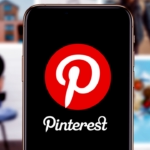Want a profile you actually own? Tired of losing reach, or worrying a single company might lock you out? In a decentralized social, you keep the keys to your identity. You choose the app, the server, and the rules you live by. This guide is your step-by-step setup, even if this is your first time.
You will learn how decentralized social works, how to pick a platform, how to set up and optimize a profile, and how to stay safe. We will cover Bluesky, Mastodon, Pixelfed, Farcaster (Warpcast), and Lens Protocol (Lenster). Plan about 45 to 60 minutes to do a full setup and make your first post.
You only need a phone or laptop, an email address, and a strong password or passkey. If you choose Farcaster or Lens, you also need a crypto wallet.
How Decentralized Social Media Works and Why It Helps You
Think of your profile as a passport. You can use it in different apps or on different servers, and the identity is still yours. That is the core idea. Your data does not have to live in a single company’s silo.
There are a few common protocols:
- ActivityPub powers Mastodon and Pixelfed. Servers talk to each other, which forms the fediverse.
- AT Protocol powers Bluesky. Accounts can move between hosting providers as the network grows.
- Farcaster and Lens both use crypto and wallets for identity and ownership.
As of late 2025, Bluesky is growing fast with new safety features, better feed controls, and longer video uploads. Mastodon continues to improve onboarding and discovery, adding features that help new users find accounts to follow. Pixelfed stays photo-first with ActivityPub support. If you want a fast overview of the space and key platforms, try this readable guide to decentralized social platforms and users.
Centralized vs. decentralized: what changes for you
- Centralized: one company controls your account and feed. If it bans you or changes rules, you have few options.
- Decentralized: many servers or apps talk to each other, and you can move if rules or vibes change.
- Benefits: more control, freedom to choose community, less lock-in.
- Trade-offs: setup can feel new, features vary by app, moderation is shared.
What you need before you start
- Device with a modern browser or a trusted mobile app.
- Email address you can access, plus a password manager.
- Passkeys or 2FA for extra security.
- Optional: crypto wallet for Farcaster or Lens. Keep your recovery phrase offline.
- Optional: a custom domain if you want a verified-style handle on Bluesky.
Pros and cons to know first
- Pros: data ownership, community choice, less algorithm lock-in, portable identity.
- Cons: more choices to make, different rules per server, wallet risks if you use crypto apps.
- Tip: start on one platform, then expand once you feel comfortable.
Pick the Right Platform for Your First Profile
Choose based on what you want to post and who you want to meet. You can always add more later.
Bluesky setup guide: fast start with a Twitter-like feel
- Best for: quick text posts and threads, wide discovery.
- How to start: sign up on the Bluesky site or app, choose a handle, add a photo and short bio.
- Nice extra: set a custom domain handle if you own a domain for added trust.
- First steps: follow topics and people you like, then post your intro.
Recent updates help new users find accounts and control their feed. Video uploads now support longer clips. Expect ongoing improvements to safety, reporting, and appeals.
Mastodon setup guide: choose a server and join the fediverse
- Best for: community-driven timelines, strong moderation by local admins.
- How to start: pick a Mastodon server that fits your interests and rules, create your account, add a profile photo, header, and bio.
- Tip: you can follow people across servers. You can migrate to another server later.
Mastodon also ships features that improve onboarding. That reduces the empty feed problem for new accounts.
Farcaster with Warpcast: crypto-native social identity
- Best for: crypto and AI communities, onchain identity.
- How to start: install the Warpcast app, create your profile and username, then join channels.
- Note: wallet use may be needed for some features. Keep recovery info safe.
Want a deeper primer before you jump in? This Farcaster walkthrough covers features and setup in plain language: Farcaster beginner’s guide.
Lens Protocol with Lenster: own your social graph
- Best for: owning your profile and connections across Lens apps.
- How to start: open Lenster, connect a wallet, create your Lens profile, then add a bio and photo.
- Tip: your profile and followers move with you across Lens apps.
Because Lens uses a wallet, your identity is portable by design. That profile can plug into many Lens-powered apps.
Pixelfed setup guide: privacy-first photo sharing
- Best for: Instagram-style photo posts without ads.
- How to start: pick a Pixelfed server, sign up, set your username, bio, and avatar.
- First steps: upload a photo, add alt text, and follow a few photographers you like.
Pixelfed speaks ActivityPub, so your photos can be seen and followed across the fediverse.
Step-by-Step: Create and Optimize Your Profile
The steps below work on any of the platforms above. Adjust terms and settings to match your app.
Claim a good handle (and set a custom domain on Bluesky if you want)
- Pick a short, easy name that matches your brand or real name.
- If using Bluesky and you own a domain, set it as your handle for trust.
- Keep the same handle across apps if possible for easy discovery.
Example: if your site is samreyes.com, you can make your Bluesky handle samreyes.com. It signals authenticity.
Write a clear bio that is searchable
- Use 1 to 2 short lines with keywords: job, niche, location, topics.
- Add one link: site, Linktree, or newsletter.
- Use one emoji or two for style, but keep it clean.
Example: “Product designer in Austin. Posts on FOSS, mobile UX, and color systems. Writing at samreyes.com.”
Add a crisp profile photo and banner
- Use a well-lit headshot or a simple logo.
- Keep the background clean and high contrast.
- Banner: show your project, tagline, or a simple color that matches your brand.
Square crops display well on most apps. Test how your image looks in dark and light modes.
Set privacy and safety controls before you post
- Turn on passkeys or 2FA. Log out of old devices.
- Set content warnings or filters if the app supports them.
- Review discoverability and mention permissions.
- On Mastodon and Pixelfed, read your server rules and reporting tools.
Take five minutes in settings. That time avoids headaches later.
Make your first post and follow key accounts
- Post a short intro: who you are, what you share, how often.
- Add 1 to 3 hashtags that match your niche if supported.
- Follow 20 to 50 accounts in your topic so the feed learns fast.
- Reply to 3 posts to meet people on day one.
Example: “Hi, I’m Sam. I share tips on UX audits and color contrast. Weekly posts every Monday. #ux #design”
Security, Backups, and Moving Your Data Later
Ownership only matters if you can keep it. Lock down accounts, keep keys safe, and know how to export your data.
If you want a broader overview of how protocols shift control from walled gardens to users, this piece on decentralized social media in 2025 explains the idea of portable profiles and content ownership in simple terms.
Turn on passkeys or 2FA and use a password manager
- Prefer passkeys when offered. If not, use app-based 2FA.
- Store backup codes safely. Do not keep them in your email inbox.
- Use a unique, strong password for each app.
A password manager creates and stores strong passwords so you do not reuse them.
Wallet and key safety for Farcaster and Lens
- Write your recovery phrase on paper and keep it offline.
- Use a trusted wallet. Consider a hardware wallet for higher value profiles.
- Never share your seed phrase. No support team will ask for it.
Treat your wallet like your house keys. If someone gets the phrase, they own the house.
Export your data and migrate if needed
- Mastodon and Pixelfed: export followers, blocks, and posts from settings. You can move to another server.
- Bluesky: review data export and hosting options so you can switch providers later.
- Keep regular backups of your profile data if the app supports it.
Migration is a feature, not a bug. This is what sets decentralized social apart.
Verify your profile and avoid scams
- Use domain or DNS-based verification where available, like custom domain handles on Bluesky.
- Watch for lookalike handles and fake links.
- Double-check wallet prompts before signing anything.
If a link looks off or a wallet prompt feels wrong, stop and verify before you act.
Conclusion
You learned what decentralized social is, how to pick a platform, how to set up a profile, and how to lock it down. Start with one app this week, then add a second later. Try this simple plan: post once a day for a week, follow 10 new accounts, and start one small thread or photo series. Your portable identity can grow across apps, on your terms, with your community. Ready to own your feed?


















